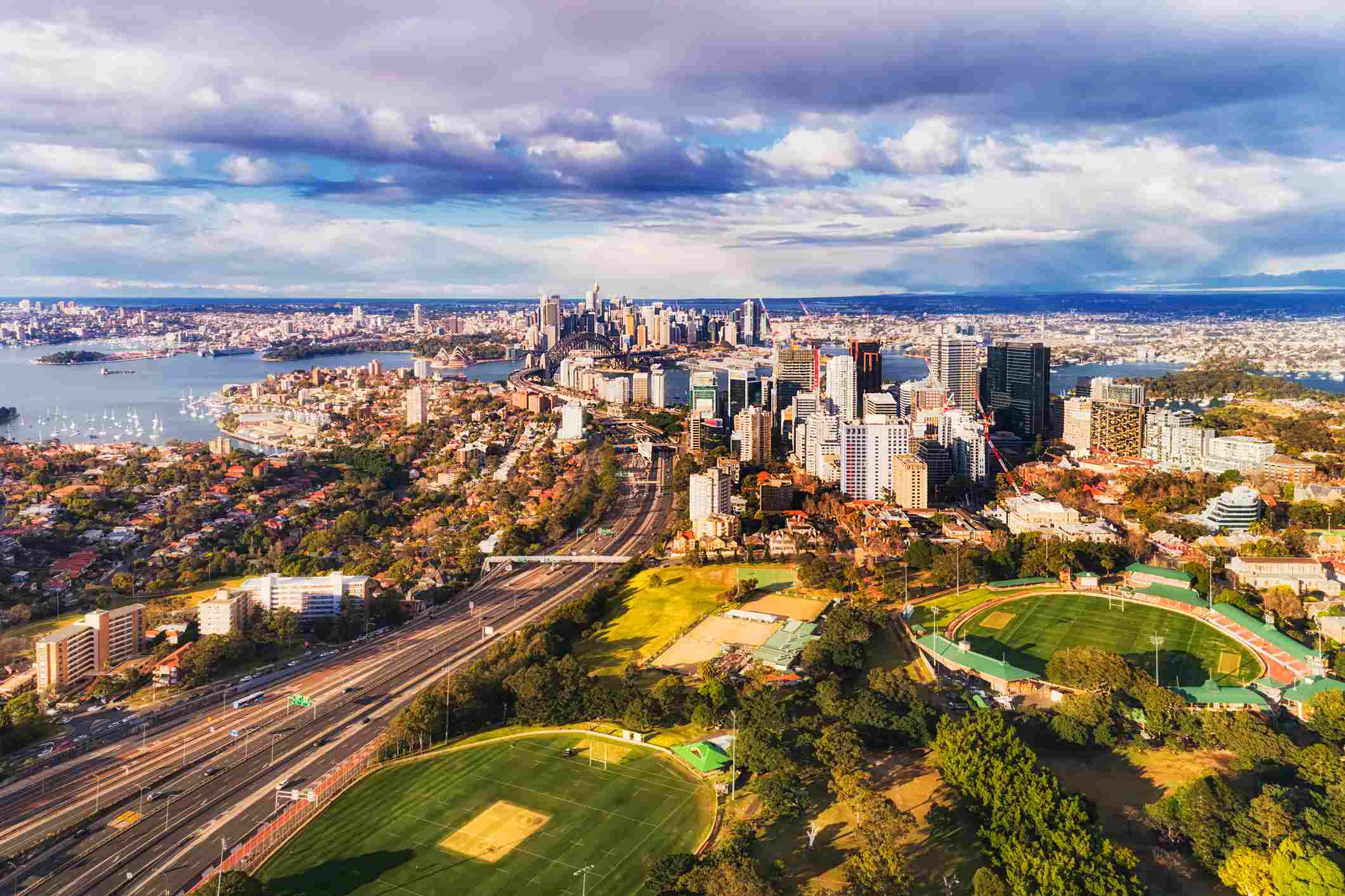Sydney and NSW property market update - November 2020
The Sydney property market continued a trend to recovery throughout November recording an increase of +0.4 per cent over the month.
Over the past three months, prices are up +0.3 per cent and +3.7 per cent over the past 12 months.
Sydney market update

Houses
$1,000,170
Monthly change: +0.9%
Units
$728,168
Monthly change: -0.7%
Sydney’s property prices recorded a second consecutive month of rises in November with overall dwellings up +0.4 per cent.
Rises were primarily seen in houses where values grew +0.9 per cent to $1,000,170. Unit prices however continue to decline, falling -0.7 per cent over the month to a median of $728,168.
According to CoreLogic’s Head of Research, Tim Lawless, the shift in weaker unit conditions is focused in the inner city areas that are closely linked to migration inflows.
“Relative weakness in the unit market can be attributed to factors including low investment activity, higher supply levels in some regions, and weaker rental market conditions across key inner city unit precincts,” he said.
Despite subdued performance from the unit market, other indicators are pointing towards a strong recovery.
The most expensive quartile of the Sydney market is continuing to trend up, with values rising +0.6 per cent in November compared to the +0.3 per cent lift in the most affordable quartile values.
Sydney’s property prices recorded a second consecutive month of rises in November with overall dwellings up +0.4 per cent.
As mentioned in our October update, the top end of the market generally leads the downturn and upswing. Value gains in the most expensive sector of the market is therefore a positive trend and a good indication that the market is turning around.
Auction volumes are also improving with the week ending 22nd November reporting 887 homes taken to auction. This is compared to 805 homes over the previous week.
Clearance rates for Sydney properties over the month have held steady above the 70 per cent range, similar to figures over the same time last year.
Taking a look at listings, Sydney property listings declined in November, down -6.4 per cent.
Louis Christopher, Managing Director of SQM Research said this was predominantly driven by a decline in old listings.
“The fall in old listings tells me stock is being absorbed at a quicker rate than levels recorded earlier this year. It is yet another signal that buyer activity is on the rise,” he said.
Regional NSW market update
Houses
$508,577
Monthly change: +1.5%
Units
$417,908
Monthly change: +0.8%
Over in our regional NSW markets, property prices have continued to perform better than Sydney. Overall dwelling for regional NSW increased +1.4 per cent over the month to a median value of $491,862.
Over the past three months prices are up an impressive +3.1 per cent and +7.0 per cent in the past 12 months.
Both regional houses and units posted gains in November with houses up +1.5 per cent while units climbed +0.8 per cent.
According to a media release by RiskWise Property Research, the latest Risks & Opportunities Report shows that lifestyle and beachside suburbs are especially outperforming the wider market.
Both regional houses and units posted gains in November with houses up +1.5 per cent while units climbed +0.8 per cent.
Notable areas that are performing well are Byron Bay, the Central Coast (North Avoca, Terrigal and Wamberal), the Hunter Valley, Wollongong, and the NSW South Coast.
The same sentiment is reflected in the Westpac Housing Pulse Report for November which outlines property price performance has been more stable in regional NSW, Newcastle, Illawarra and the South Coast all maintaining steady gains of around 5 per cent over the year.
According to CoreLogic’s Head of Australian Research, Eliza Owen, demand for properties in these regions has increased dramatically.
“Commutable regional areas within a reasonable travel distance to the major metropolitan centres have seen particularly extraordinary increases in demand. House sales volumes increased by double digits across the mid north coast, Illawarra and Hunter Valley,” she said.
Why didn’t the property market crash?
An article by Ms Owen published at the end of November explains why the Australian property market did not crash despite it being the first recession in over 28 years.
This year, we experienced Australia’s largest economic downturn since the 1920s, however between March and October, National values fell just -1.7 per cent with values in the past two months posting increases.
According to the article, there are three main reasons why the property market showed such resilience.
The first is low cost debt. The RBA’s decision to reduce the official cash rate target to a historic low of 0.1 per cent means that mortgage rates are also at a record low. The low cost of borrowing money encourages buyers to enter into the market as for some, it may now be cheaper to purchase a property than rent.
Secondly, mortgage repayment deferrals allowed minimal forced sales in a period where sudden job loss was high. This is important because a high amount of forced sales in the housing market would have increased the supply of housing in the market and subsequently lowered the value of properties. Low levels of stock during this time has been one of the primary factors in insulating prices.
Thirdly, the nature of this downturn was different as job losses were primarily seen in food, accommodation and the arts sectors. Those in these industries are less likely to have mortgage debt.
Sydney and NSW rental market update
Divergence between house and unit rents were most pronounced in Sydney and Melbourne where tenancy demand is more reliant on overseas migration and supply levels were already high prior to Covid.
Since the end of March, Sydney house rents have decreased by -0.4 per cent while unit rents have dropped a more significant -6.6 per cent.
According to Domain Senior Research Analyst, Nicola Powell, improvement in rental conditions will be dependent on international borders re-opening.
“The question now is how soon international borders will reopen to restore the imbalance in pockets of the rental market.
“It’s a question of how many of these investors can weather this disruption… if we do see rental markets disrupted for a longer period of time they’ll start offloading,” she said.
"While some risk areas of the market remain...overall 2021 is set to be a strong year of capital growth in Australian property.”
While investors in certain areas may be finding it harder to secure tenants, renters are enjoying more choice and reduced prices.
The latest Rental Affordability Index from the Australian Institute of Health and Welfare found conditions for renters improved across Greater Sydney. The average rental household in Greater Sydney spends around 24 per cent of its total income on rent.
The change in rents for regional NSW on the other hand has been increasing, with house and unit rents up +3.0 per cent and +3.6 per cent respectively since the end of March.
Doron Peleg, CEO of RiseWise Property Research says that “while some risk areas of the market remain, especially in some of the oversupplied unit segments of the market, overall 2021 is set to be a strong year of capital growth in Australian property.”
What does this mean for the Sydney market and what can you expect in future?
According to data from research firm Digital Finance Analytics (DFA), 2021 will potentially be the year that Australians make their big move. The firm conducted a survey asking Australians if they intended to buy or sell in the next six months.
The survey concluded that over 1.1 million Australians intend to sell their property in the next six months with the largest segments being down-sizers, international owners and investors.
This is compared to the same survey conducted in 2019 which showed that just 337,000 people intended to sell their property in the next six months.
Property market confidence for 2021 is quite strong with 63 per cent of NSW respondents expecting property prices to hold steady or rise in the near future.
This could dramatically impact the property market in the months ahead and shift the balance of supply and demand in the property market.
Houses will likely be in far greater demand over units and there will be huge differences on how this influx of properties on the market will impact prices in different areas.
Heading into 2021, property market confidence for 2021 is quite strong according to the latest Canstar’s fourth annual Consumer Pulse Report with 63 per cent of NSW respondents expecting property prices to hold steady or rise in the near future.
Remember:
Market conditions will vary from suburb to suburb, and the value of your home is not only impacted by location, but also by property type and price point. While there may have been overall price drops Sydney, every suburb is different, and indeed some suburbs are showing strong performance in this market.
For advice around the biggest market indicators that impact price growth, you can download this helpful guide.








